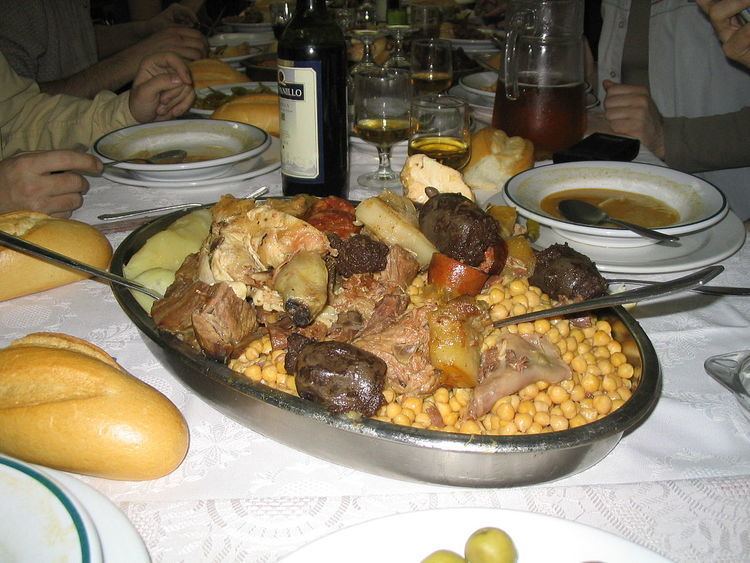 | ||
The cuisine of the Community of Madrid is an amalgamation of the cuisines of various regions of Spain developed, in part, by mass migration to the capital city starting during the reign of King Felipe II. As the city grew, it incorporated the culinary traditions of the municipalities it absorbed into the area now known as the Community of Madrid.
Contents
The smell of local cooking is frequently compared to that of food fried in vegetable oil: churros, calamares a la romana, tortilla de patatas, bocadillos de calamares, patatas bravas, chopitos, gallinejas, among other traditional dishes, which can be smelled cooking no matter the time of day.
History
The culinary history of Madrid began at the end of the 16th century, when King Felipe II established Madrid as the capital city of his kingdom. From this point forward, people from all parts of the Spanish Empire flocked to the city, bringing with them their unique customs and traditions. Some of the most famous local inns were established during these early centuries of development: Posada de la Villa in 1624 and Casa Botín in 1725.
One of the earliest restaurants is the Lhardy, which opened its doors in 1839, which prompted the establishment of similar locales. In 1873, entrepreneur Matias Lacasa arrived from Vienna and decided to open a bakery to sell his patented pastry pan de viena. His establishment grew to become the base of the Viena Capellanes chain of pastry shops.
Today, Madrid is home to many restaurants, offering both regional Spanish dishes and international cuisine. An international culinary destination, Madrid is lauded by its foreign visitors, whose only complaint is the Spanish schedule for meals. As in much of Spain since the Francoist era, dinner is served between two and four in the afternoon, and a light supper is consumed after ten at night.
Typical dishes
Eating tapas is common in Madrid. This is the practice of visiting several bars and ordering a number of small, varied dishes which are then shared among the people in the group. Many of the same local dishes available as tapas can also be ordered in regular servings at sit-down restaurants.
Some of the most-typical local dishes include:
Desserts
Madrid is renowned for its many types of traditional pastries. Some of the more common include:
Beverages
Madrid has its own designation of origin, which is divided into three zones: Arganda, Navalcarnero and San Martín de Valdeiglesias, comprising a total of 22,000 hectares of vineyard.
A popular anisette liquor Anís, made of anise grown in Chinchón, is a typical apéritif.
The traditional leche merengada, a cold cinnamon- and lemon- flavored meringue; and horchata de chufa, horchatas made of chufas original from the Valencian Community, are popular nonalcoholic beverages.
